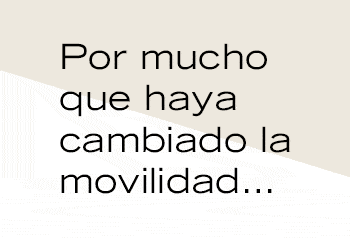Experts predict that this number will increase over the next two centuries of bird species becoming extinct It will exceed the terrifying number of 1,300. This debacle could erase several important and essential roles for nature.
An article recently appeared in Science showing that the consequences of this extinction are much greater than previously thought, because when species disappear, their role in the environment is also lost. ecosystem, such as pollinating, spreading seeds and controlling pests.
A study, led by the University of Birmingham (UK) and CREAF, has dissected the past and the future future of bird extinction on a global scale since humans arrived on the scene 130,000 years ago.
In total, it is estimated that at least 610 species have already disappeared. almost all due to human causesIt is estimated that another 1,305 species could become extinct in the next two centuries alone, which is practically double what we have so far.
Beyond this figure, the study warns that the consequences of extinction are greater than previously thought, as when a species disappears, its role in the ecosystem dies with it, some birds control pests by eating insects, while scavenger birds eat dead matter recycling, and eating other fruits and spreading seeds that allow more plants and trees to grow some are very important pollinators. As more species with different roles disappear, more functional diversity is lost.

In this sense, the study warns that this is already the case lost 20% of functional diversity worldwide and projects that could add another 7% over the next 200 years.
“We observed that species that play a unique role in the ecosystem tend to become extinct. For example the Iconic Dodo (Raphus cucullatus) dispersing large fruit seedsOn the island of Mauritius, there are few birds that replace this function,” explains Ferran Sanyol, CREAF researcher and one of the lead authors of the publication.
An example of an important and vulnerable species in Catalonia is the bearded vulture (Gypaetus barbatus), a vulture that feeds on bone remains and helps recycle nutrients, “this species is not threatened on a global scale, but it is in this region,” Sayol continues.
Another finding of the study is that 5% of lineages – species that are different but share a common ancestor in their genes – have already been eroded. to erase 3 billion years of evolutionary history in a few years, something like cutting off an entire branch from the tree of life,” Sayol adds.
Some examples of extinct genera are the elephant birds (Aepyornithiformes), which grew to almost 3 meters in height and lived in Madagascar; the moas (Dinornithiformes), large herbivores that inhabited New Zealand. “If the predictions come true In the future, another 3% of genera could disappear” adds Sanyol. One of these is the species of the subfamily Drepanidinae, the “honey birds” endemic to Hawaii, which have already lost half their species and are “essential for the pollination of flowers,” says Sayol.
The islands, a black point of extinction
The data shows that the most extinctions are concentrated on the islands. Specifically, 80% of all extinct species were islands and as a result, 31% of functional diversity has already been lost in these ecosystems.
“The future is not very encouraging because we see that if we do not take action, an additional thousand island species could become extinct by 2224,” Sanyol warns. One of the reasons they mention is that they cannot ‘escape’ from new exotic species or pets that prey on them or introduce new diseases.
Some close cases of key species have been found in the Canary Islands, with the white-tailed pigeon (Columba junoniae) and the turquoise pigeon (Columba bollii) contributing regenerate laurel forests because they feed on their fruit and in return they spread their seeds. “Both are starting to be threatened in Spain and with their disappearance we would lose this role,” Sayol warns.
The Balearic shearwater (Puffinus mauretanicus), a seabird that lives in the Balearic Islands, in turn contributes Nutrient cycles in coastal waters its waste “makes it an endemic species that breeds only in the Balearic Islands and is in danger of extinction,” Sayol adds.
Improve bird conservation strategies
To conduct the study, the team analyzed the loss of bird diversity in three key periods: from 130,000 years ago; since 1500, the date the IUCN began counting extinct and endangered species, and the following 200 years.
To collect the oldest data, the authors traveled to museums in different countries where stuffed birds, skeletons and fossils of extinct specimens were kept; certain characteristics such as wing size, beak or height And this information allowed them to infer their role: “For example, if they have a long beak, they are probably pollinators,” says Sayol. With all this information, current data and thanks to mathematical models, they were able to discover the past and future of bird extinction.
“This scientific work reminds us that the current extinction crisis is not limited to the number of species, but that the functional and lineage diversity is also reduced” says Tom Matthews, researcher at the University of Birmingham and first author of the study.
“Understanding the impact of past extinctions will help us better estimate their impact future consequences for ecosystems and thereby improve global conservation and restoration strategies,” he concludes.
Birds fulfill certain roles that are decisive in maintaining nature ecosystem balance in nature. If they disappear, there will be no one left to do their work. And the consequences of this will be disastrous for the rest of living things.

